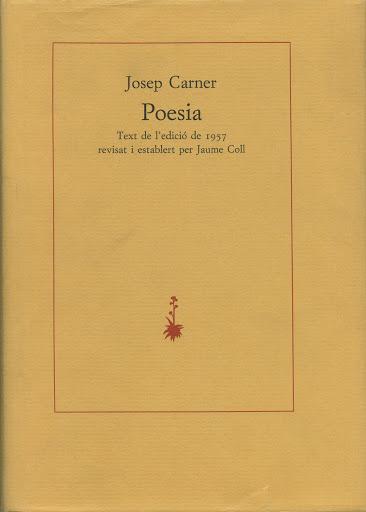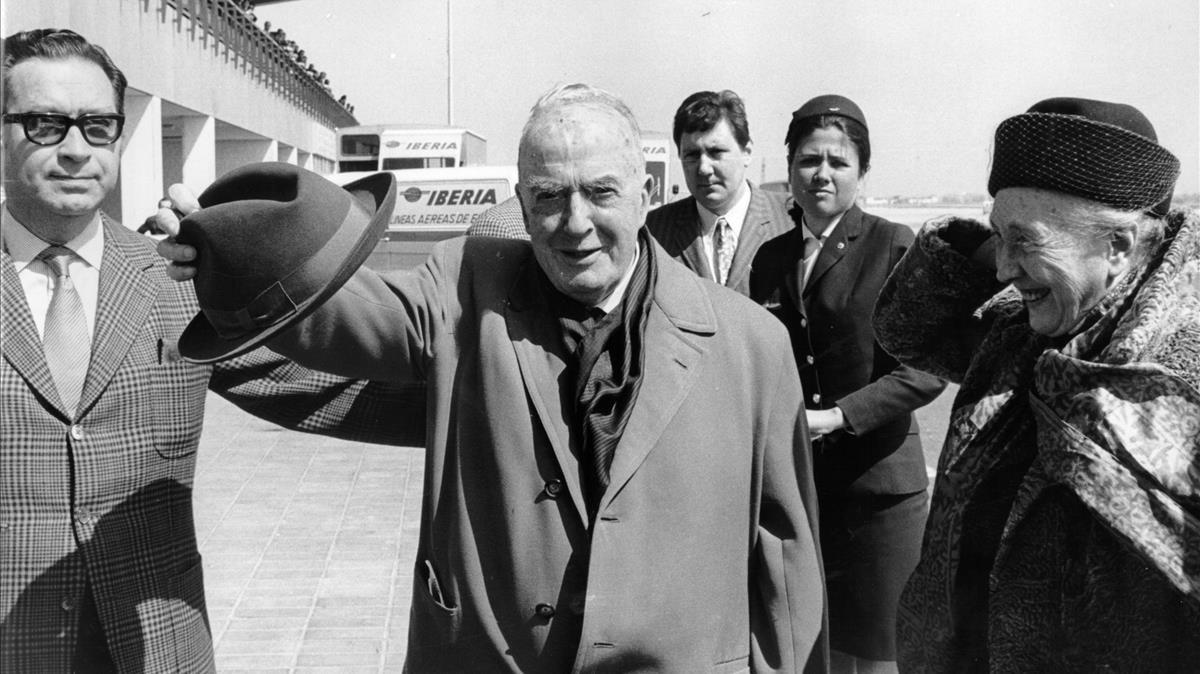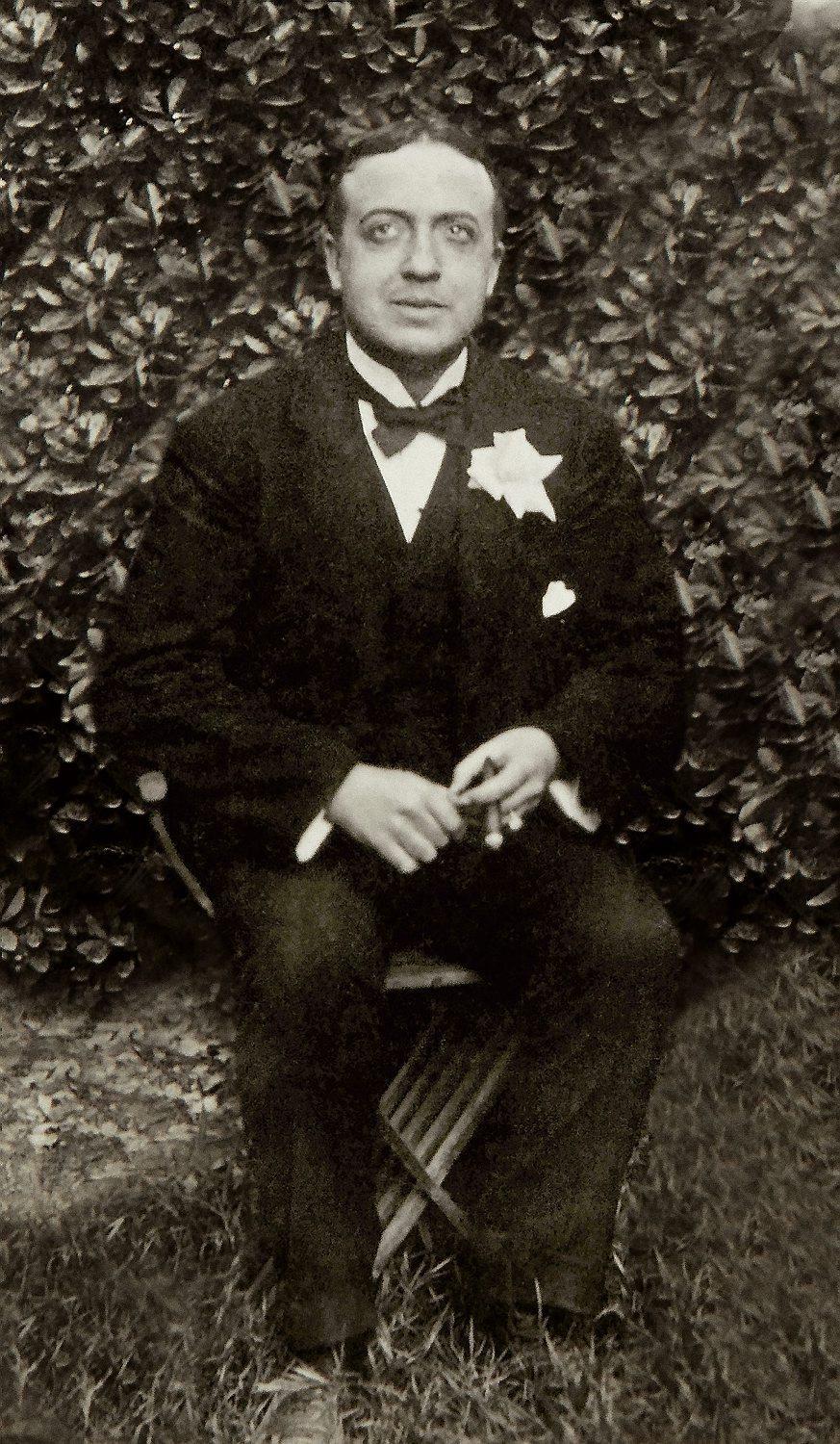In the early 1960s, a committee working on Josep Carner’s candidacy for the Nobel Prize in Literature achieved surprising international consensus, as explained by Jaume Subirana in Josep Carner, l’exili del mite (Josep Carner, the Legend’s Exile). The goal was for the most prestigious literary recognition to be awarded to an author in exile at odds with the dictatorial government of his country, which persecuted and prohibited the language he wrote in. It was clear that the candidacy would not be backed by the public powers and prevailing ideologies that would have helped it to succeed. On the contrary: they did everything they could to obstruct it. Nonetheless, he received a surprising amount of support from heavyweights such as T. S. Eliot, François Mauriac, Giuseppe Ungaretti and Roger Caillois. For Catalans, it is easy to name Josep Carner the greatest ever writer in their language. But what does he represent within universal literature? How did he accumulate this backing, which seems unlikely to be personally or politically motivated?
Josep Carner was a member of the first generation of European poets to solve the crisis of Symbolist values in a new approach that transformed and conditioned the poetic genre for evermore. Born in 1884, he was a precocious literary talent, publishing his first texts at the age of 12. He was trained in Symbolism, but quickly ran into the problems denounced by various currents from this movement’s period of crisis: the supremacy of musical vagueness at the cost of precision; a disconnection from the ordinary man’s life; the exacerbation of individuality; the marginalisation of society; an excess of intellectualisation, etc. Carner used this Symbolist inheritance and these criticisms of it to establish a new perception of poetry, shared with W. B. Yeats and R. M. Rilke, who still remained quite close to Symbolism, with Paul Valéry, T. S. Eliot, Giuseppe Ungaretti, Jorge Guillén and with Catalan poets that followed him on this path, including Carles Riba, Joaquim Folguera, J. V. Foix, Marià Manent, Bartomeu Rosselló-Pòrcel and Joan Vinyoli. Their approach has come to be named post-Symbolist poetry.
This new idea of poetry granted it a place in modern society where it was not doomed to the marginalisation caused by Symbolism and threw the image of the damned, terrible, Bohemian poet into the dustbin of history. In the article ‘La dignitat literària’ (‘Literary Dignity’, 1913), Carner displayed the historical awareness with which he was collaborating in this change:
Romanticist discontentment stemmed from the poet’s belief in his unacknowledged divine origins and his conviction that poetry was an incomparable mission that freed him from his duties. Today, with occasional resistance, but quite rightly, the classical idea of the poet is being recovered: the professional nature of the art is even being challenged and the artist is implored to take rest in normality
Poets are knowledge workers, so their work leaves no room for ethereal or irrational ideas regarding inspiration. They are not higher beings and possess no special sensitivity connected to inaccessible gods, on the margins of the world. Carner’s analyses of the poet’s task coincide with those of Valéry, who was the sworn enemy of God-given, spontaneous, inspired poetry. From the turn of the century onwards, Carner spoke of a kind of ‘rigorous goldsmithing’. He concluded that a line of poetry may come, radiate from the sound of a word, but that an architecture must then be built to match it. He even pondered the similarity between his and Valéry’s notions of poetic creation.
Based on this new conception of the poet and poetry, Carner set out to use the genre to analyse how relations between the individual and the world occur, via the intermediary of consciousness, which is essentially made up of language. His poetry formulates the human experience of reality while examining its temporary nature, the way memory works, the creation of illusions, the uses of language, etc. And he does so by going through poetry from the past, which offers crystallised human experiences from throughout history. Auques i ventalls (1914) re-examines the relationship between the individual, the poet and the community in the modern city, consciously situating them at the opposite pole to where Baudelaire had left them. La paraula en el vent (The Word in the Wind, 1914) reformulates the whole Western tradition of love, from Plato, the troubadours and Petrarch to English Romantic ballads and French Symbolism, to examine the temporary nature of consciousness and how it establishes ways of relating and communicating between the individual and the environment, the Self and the Other. The book is put together with the ‘perception, not only of the pastness of the past, but of its presence’ demanded by T. S. Eliot in Tradition and the Individual Talent; the poet wrote the book, as implored by Eliot, ‘not merely with his own generation in his bones, but with a feeling that the whole of the literature of Europe from Homer and within it the whole of the literature of his own country has a simultaneous existence and composes a simultaneous order’. Soon later, as suggested by its title, Bella terra, bella gent (Beautiful Land, Beautiful People, 1918) investigates the processes through which a people transforms its environment materially and intellectually, building a culture that articulates individual lives as a collective spirit. For L’oreig entre les canyes (1920), Carner borrowed a title by W. B. Yeats, The Wind Among the Reeds, to refer to the links between poetry and nature, which he analyses in the book. But this desire to construct knowledge of the human condition was especially visible in El cor quiet (The Still Heart, 1925), which starts off in a gloomy, vague, meaningless world and ends up in an inner state full of light, certainties and serenity.
Carner, like Valéry, Ungaretti and Eliot, was a staunch supporter of the conventional form. Indeed, it has established a ‘beautiful people’ over the centuries to bring meaning to a ‘land’ by making it ‘beautiful’. This is the only way the shapeless wind among the reeds can take on meaning. His books are full of sonnets, songs, aucas, ballads, silvas, alexandrines, classical decasyllables and all kinds of other regular metres. But he also reserves space for formal experimentations that represent an extension of convention, but never a split from it. In fact, Carner is the Catalan master of versification. In any Catalan with a sensitive ear, the musicality and linguistic beauty of his poetry stirs up the same feelings as Shakespeare does in the English, Racine in the French, Leopardi in the Italians or Juan Ramón Jiménez in the Spanish. But his aim is never to limit himself to displaying this skill, but rather to use it as the most precise tool available to get to know all the corners of the human being unreachable by science.
Only through convention does the poet manage to depersonalise himself within the community, in its forms and language – which is the most characteristic, longest-lasting thing about it – to become its conscious voice. From the beginning of his career, Carner believed that, as he wrote in the aforementioned ‘La dignitat literària’, ‘the poet is the flesh and blood of the people, and his voice is the collective voice, but unconsciously, without melodramatic enthusiasm and without his inspiration being conditioned by his personal qualities of compassion and goodness’. Carner’s thoughts on this subject coincide fully with Eliot’s theories of poetic impersonality in ‘Tradition and the Individual Talent’, based on Keats’s negative capability, as pointed out by Enric Sullà in Carneriana.
For this reason, many of Carner’s poems are portraits of the common man and how his consciousness relates with the reality surrounding him. They are poems with a clear link to those of his contemporaries, such as Eliot’s ‘The Love Song of J. Alfred Prufrock’. They culminated in one of Carner’s masterpieces: the 1365-line poem Nabí (1941). The protagonist is Jonah, the biblical prophet. At the beginning, we witness the awakening of his consciousness, which is like a sharp pain and takes the form of God’s voice. The various life stages of this consciousness correlate to those of any human being. And it is analysed in relation to the collective history of the wars of the twentieth century and before, as well as the exiles they caused.
Carner himself was in exile when he finished and published Nabí. As well as being a poet, he was one of the biggest activists among the intellectuals of his time. He wrote hundreds of political articles against fascism, Nazism and dictatorships, in which he defined himself as a liberal, democrat and republican. He also authored short stories, plays and masterful essays that analyse the behaviour and customs of individuals and societies. But poetry was always his priority. Through it, he gathered the Western literary tradition that came before him and renewed it so as to contribute towards establishing the language, forms, resources, themes, symbols and meanings on which all contemporary poetry is based. This process culminated, as indicated by the title, in Poesia (Poetry, 1957), a monumental volume for which Carner reviewed, rewrote, reorganised and expanded the poems he had written up to that point to build a piece of work that transformed his whole life, along with that of his contemporaries and his time, into poetry.
This ability to turn life into a key poetic oeuvre, both in his own tradition and in that of Europe in general, made Carner renowned among international literary authorities of all kinds. Nabí was analysed by readers such as philosopher and professor at the Sorbonne Jean Wahl; professor of aesthetics at the University of Liège Arsène Soreil; and Émilie Noulet, scholar of Symbolism and Valéry, and Carner’s wife from 1937. Roger Caillois, meanwhile, wrote the prologue to Paliers (1950), mentioning that Carner did not make the poetic mistakes of distancing himself from the people, of casting a pointless spell over them with the music of his metre, or of falling into the trap of becoming obscure. He simply defined common feelings in order to get to know them. And in the book published in tribute to the poet, L’obra de Josep Carner (The Work of Josep Carner, 1959), Jean Cassou wrote that Carner’s poetry is the exquisite, subtle art of expressing immemorial truths, while Jules Supervielle and Nobel Prize in Literature winner Gabriela Mistral expressed their admiration for Carner, and Ungaretti deemed him a great, brilliant poet. A brilliance that still lights up the world today.










